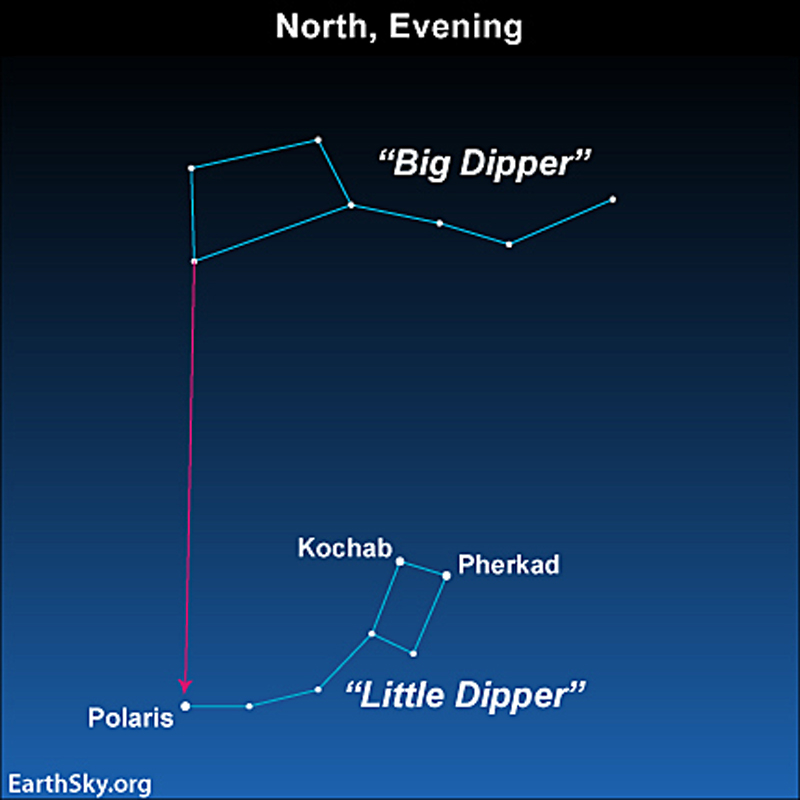
Meet Kochab and Pherkad
Tonight, find the stars Kochab and Pherkad in the Little Dipper.
You can’t ever find the Little Dipper? That’s because it’s fainter and looks less like a dipper than the Big Dipper. The Big Dipper appears high in the northeast sky at nightfall on spring evenings and wheels above Polaris at late evening.
So, how do you find Polaris? If you draw an imaginary line between the two outer stars in the bowl of the Big Dipper and extend that line northward on the sky’s dome, you’ll come to Polaris, the North Star. Polaris is part of the Little Dipper. It marks the end of the Little Dipper’s handle. Then, look for Kochab and Pherkad. They are the two outer stars in the bowl of the Little Dipper.

Love what we do? Donate here to support astronomy education so that we can continue to bring you updates on our world and cosmos. We couldn’t do this without all of you!
Pole stars
Of course, Polaris is special because Earth’s axis nearly points to its location in the sky. Polaris is less than a degree away from the true north celestial pole on the sky’s dome now. It’ll be closest to true north – less than half a degree away – in the year 2102. The change is due to a motion of Earth called “precession,” which causes Earth’s axis to trace out a circle among the stars every 26,000 years.
However, thousands of years ago, Polaris was an ordinary star in the northern sky, known to the Greeks by the name Phoenice.
Other ordinary stars in the northern sky – Kochab and Pherkad, the two outermost stars in the bowl of the Little Dipper (see chart above) – have had the honor of being pole stars.
Kochab and Pherkad served as twin pole stars from about 1500 BC to about 500 BC.
They’re still sometimes called the Guardians of the Pole.
Kochab is located about 130 light-years away. Pherkad is more distant, at about 487 light-years by some estimates. Meanwhile, Polaris is a about 434 light-years away.
Bottom line: Kochab and Perkad are in the Little Dipper asterism. You say you can find the Big Dipper but not the Little Dipper? This post will help.
EarthSky astronomy kits are perfect for beginners. Order today from the EarthSky store











